Advertisements
Advertisements
प्रश्न
Perpendicular dropped on the base of a parallelogram from the opposite vertex is known as the corresponding ______ of the base.
उत्तर
Perpendicular dropped on the base of a parallelogram from the opposite vertex is known as the corresponding height/altitude of the base.
APPEARS IN
संबंधित प्रश्न
Find the area of the following parallelogram:
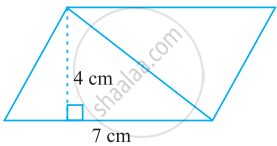
DL and BM are the heights on sides AB and AD respectively of parallelogram ABCD (see the given figure). If the area of the parallelogram is 1470 cm2, AB = 35 cm and AD = 49 cm, find the length of BM and DL.
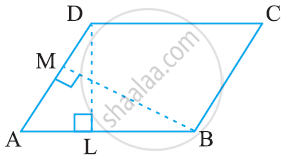
The adjacent sides of a parallelogram are 21 cm and 28 cm. If it's one diagonal is 35 cm; find the area of the parallelogram.
Find the height ‘x’ if the area of the parallelogram is 24 cm2 and the base is 4 cm.
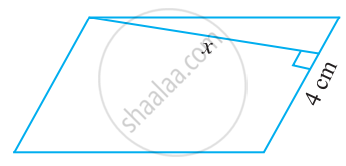
In a parallelogram PQRS (See the diagram) PM and PN are the heights corresponding to the sides QR and RS respectively. If the area of the parallelogram is 900 sq.cm and the length of PM and PN are 20 cm and 36 cm respectively, find the length of the sides QR and SR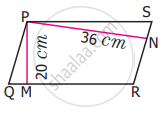
Find the area of the parallelogram ABCD if AC is 24 cm and BE = DF = 8 cm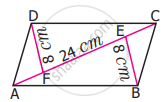
Find the height of the parallelogram whose base is four times the height and whose area is 576 sq.cm
If the sides of a parallelogram are increased to twice its original lengths, how much will the perimeter of the new parallelogram?
In the given figure, area of parallelogram BCEF is ________ cm2 where ACDF is a rectangle.
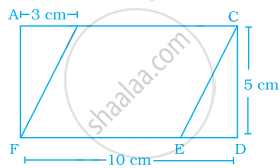
To find area, any side of a parallelogram can be chosen as ______ of the parallelogram.
